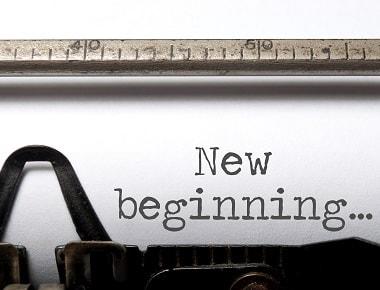
Drug Use by the Numbers
Most people are generally aware of a drug problem in the United States, but the depth and breadth of the issue often go unseen. The following shocking statistics illustrate just how widespread and serious the issues of drug and alcohol addiction really are.
Facts You Need to Know
- In 2016, the prevalence of drug use worldwide was estimated at roughly 5.6%.⁸
- In the 2017 National Survey on Drug Use and Health (NSDUH), approximately 279,000 Americans aged 12 or older reported having used some type of illicit drug in the year preceding the survey.¹
- According to 2015 data from the Centers for Disease Control (CDC), roughly 10.6% of Americans age 12 or older reported some type of illicit drug use over the past month.⁸
- The CDC’s Chief or Mortality Statistics has described recent trends in drug-related mortality to those of the HIV epidemic in the 80s and 90s. Recent drug-related death rates are very similar to HIV death rates at the peak of the epidemic in 1995.⁵
Drug Use Statistics by Specific Substance
Cocaine
- According to 2017 data, roughly 40.5 million people in the U.S. reported having used cocaine at some point in their lifetimes.⁶
- At the time of the 2017 NSDUH report, 2.2 million Americans were estimated to be current users of cocaine.¹¹
- In 2017, 14,556 cocaine-related deaths were reported.⁶
Marijuana
- As of 2017, more than 40 million Americans reported having used marijuana over the previous year. ⁶
- For well over half of new drug users (70.3%), marijuana is their first foray into illicit substances.⁹
- Marijuana dependence is the second most common type of dependence, preceded only by alcohol (roughly 4.2 million cases of marijuana dependence in 2013).⁹
Alcohol
- In 2015, approximately 86% of adults (18+) reported having consumed alcohol at least one time in their lives. 56% of these individuals also reported having a drink sometime within the month before the survey.²
- Alcohol abuse is the third leading cause of preventable death in the United States, with approximately 88,000 alcohol-related deaths per year.²
- As of 2015, approximately 15 million adults had been diagnosed with Alcohol Use Disorder (AUD). Fewer than 7% of these individuals received treatment.²
Prescription Drugs
- The 2017 NSDUH report estimates that roughly 6 million people aged 12 or older had misused some sort of prescription psychotherapeutic medication in the month preceding the survey.¹¹
- In this survey, pain relievers accounted for the majority prescription drug abuse (3.2 million people).¹¹
- Young adults aged 18-25 are the heaviest users of prescription drugs, including opioid painkillers, anti-anxiety medications, and ADHD stimulant drugs.¹⁰
- Approximately 1,700 Americans in this age group died of prescription drug overdose in 2014.¹⁰
Heroin
- Heroin accounts for an estimated 18% of drug rehab admissions in the United States.⁴
- In 2017, an estimated 886,000 Americans reported having consumed heroin during the previous year.⁶
- That same year, roughly 652,000 Americans were reported to have a heroin dependence. That’s nearly 74% of past-year heroin users.⁶
Statistics by Demographic
Age
- Adults
- In a 2016 CDC report, an estimated 47.1% of adults aged 18 or older had used some manner of illicit drug in the month preceding the survey.¹²
- Drug use among individuals in their fifties and sixties has been consistently rising, in part because baby boomers historically have used more drugs than their predecessors.⁹
- Teenagers
- In 2016, the CDC estimated that roughly 23.2% of teens (aged 12-17) had used some kind of illicit drug in the month preceding the survey.¹²
- As of 2017, the lifetime prevalence of teenage drug use among 8th, 10th, and 12th graders was just over 33%.⁶
- Individuals in their late teens and early twenties (18-20) tend to use drugs the most of any age demographic.⁹
Gender
- Men
- According to 2016 data from the CDC, an estimated 12.8% of men had used some kind of illicit drug in the past month.¹²
- Across almost all types of illicit substances, men are more likely to use drugs than women.⁷
- Due to a higher prevalence of use, men also tend to die from an overdose or end up in emergency departments more often than women do.⁷
- Women
- According to 2016 data from the CDC, an estimated 8.5% of women had used some kind of illicit drug in the past month.¹²
- Although women are less likely to use drugs than men, they are just as likely to develop an addiction as men—possibly due to greater susceptibility to cravings and relapse.⁷
- Adult women do not misuse alcohol as often as adult men, but girls aged 12-20 tend to misuse it more than boys their age.⁷
Race and Ethnicity
According to 2016 data from the CDC, past-month illicit drug use was highest among individuals of two or more races (20.2%), followed by American Indian or Alaska Native (15.7%), Black or African American (12.5%), White (10.8%), Native Hawaiian or Other Pacific Islander (9.8%), Hispanic or Latino (9.2%), and Asian (4.1%).¹²
Employment Status
Data from 2005-2011 reveals that the prevalence of illegal substance use among adults aged 18 or older changes with employment status. 18% of past-month illicit substance users were unemployed, 10% were employed part-time, and 8% were employed full time—at least 35 hours per week.¹³
Overdose Statistics
- In the year 2016, 5,376 teens and young adults (aged 15-24) were killed by drug overdose.⁶
- Women aged 45-54 have a greater likelihood of overdosing on prescription opioids than women of other ages.⁷
Drug Addiction Treatment Statistics
- As of 2017, there were more than 13,500 addiction treatment facilities operating in the United States. More than 1,300 of these were located in the state of California.⁶
- Nearly 684,000 rehab facility clients were reported as having co-occurring substance abuse and mental health disorders in 2017.⁶
- In 2017, approximately 1 in 13 Americans aged 12 or older needed treatment for a substance abuse problem.¹¹
The Economic and Social Costs of Drug Abuse
- In 2013, the National Institute on Drug Abuse (NIDA) estimated the total economic cost of substance abuse at over $740 billion per year.³
- By 2015, the CEO of the Center for Network Therapy in New Jersey estimated that this total had exceeded $1 trillion.¹⁴
- Children and families pay a high non-economic price. Over 10% of American children live with a parent who has an alcohol addiction.²
Find Expert Help for Drug Addiction at Yellowstone Recovery
Having this kind of in-depth data on drug and alcohol use in the United States is absolutely
crucial to finding solutions that really work. Even so, it’s important to remember that the individuals dealing with addiction on a day-to-day basis are not just another statistic. At Yellowstone Recovery, we understand that addiction is a disease and that those afflicted deserve help and support, not judgment.
If someone close to you or you are trapped in the cycle of drug or alcohol addiction, it’s time to reach out for help. Call our addiction recovery experts at (888) 418-4188 to get started. We’ll walk you through our inpatient, outpatient, and intensive outpatient programs, discuss financing options, and answer any questions you may have.
Sources:
- https://www.samhsa.gov/data/sites/default/files/cbhsq-reports/NSDUHDetailedTabs2017/NSDUHDetailedTabs2017.htm#tab1-1C
- https://www.niaaa.nih.gov/publications/brochures-and-fact-sheets/alcohol-facts-and-statistics
- https://nida.nih.gov/drug-topics/trends-statistics
- https://www.drugfreeworld.org/drugfacts/heroin/international-statistics.html
- https://www.nytimes.com/interactive/2016/01/07/us/drug-overdose-deaths-in-the-us.html
- https://www.statista.com/topics/3088/drug-use-in-the-us/
- https://nida.nih.gov/publications/research-reports/substance-use-in-women/sex-gender-differences-in-substance-use
- https://www.cdc.gov/nchs/fastats/drug-use-illegal.htm
- https://nida.nih.gov/drug-topics/trends-statistics
- https://www.drugabuse.gov/drug-topics/trends-statistics/infographics/abuse-prescription-rx-drugs-affects-young-adults-most
- https://www.samhsa.gov/data/report/2017-nsduh-annual-national-report
- https://www.cdc.gov/nchs/data/hus/2017/050.pdf
- https://www.stlouisfed.org/publications/regional-economist/july-2013/exploring-the-link-between-drug-use-and-job-status-in-the-us
- https://www.psychologytoday.com/us/blog/sure-recovery/201708/actual-cost-drug-abuse-in-us-tops-1-trillion-annually








